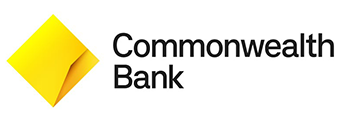Fact Checked
| Lender | Car Loan | Interest Rate | Comparison Rate* | Monthly Repayment | Interest Type | Secured Type | Early Exit Fee | Ongoing Fee | Upfront Fee | Total Repayment | Early Repayment | Instant Approval | Online Application | Tags | Features | Link | Compare | Promoted Product | Disclosure |
|---|---|---|---|---|---|---|---|---|---|---|---|---|---|---|---|---|---|---|---|
6.28% p.a. | 6.28% p.a. | $389 | Fixed | Unsecured | – | $0 | $0 | $23,356 |
| Promoted | Disclosure | ||||||||
6.30% p.a. | 6.30% p.a. | $389 | Fixed | Unsecured | $0 | $0 | $0 | $23,367 | |||||||||||
6.45% p.a. | 6.45% p.a. | $391 | Fixed | Unsecured | $0 | $0 | $0 | $23,451 | |||||||||||
6.56% p.a. | 6.56% p.a. | $392 | Fixed | Unsecured | – | $594 | $0 | $23,513 | |||||||||||
6.28% p.a. | 6.28% p.a. | $389 | Fixed | Unsecured | $0 | $0 | $345 | $23,356 | |||||||||||
6.74% p.a. | 7.57% p.a. | $394 | Fixed | Unsecured | $0 | $0 | $595 | $23,615 | |||||||||||
6.45% p.a. | 6.45% p.a. | $391 | Fixed | Unsecured | – | $0 | $0 | $23,451 | |||||||||||
6.89% p.a. | 7.17% p.a. | $395 | Fixed | Unsecured | – | $0 | $199 | $23,699 | |||||||||||
7.49% p.a. | 8.89% p.a. | $401 | Fixed | Unsecured | – | $10 | $250 | $24,040 | |||||||||||
7.75% p.a. | 9.15% p.a. | $403 | Fixed | Unsecured | $0 | $15 | $0 | $24,188 | |||||||||||
7.99% p.a. | 8.20% p.a. | $405 | Fixed | Unsecured | – | $0 | $150 | $24,326 | |||||||||||
8.20% p.a. | 8.27% p.a. | $407 | Fixed | Unsecured | $0 | $0 | $0 | $24,447 | |||||||||||
8.49% p.a. | 8.49% p.a. | $410 | Fixed | Unsecured | – | $0 | $0 | $24,614 | |||||||||||
8.98% p.a. | 9.34% p.a. | $415 | Fixed | Unsecured | $0 | $0 | $250 | $24,898 | |||||||||||
8.99% p.a. | 9.35% p.a. | $415 | Fixed | Unsecured | $0 | $0 | $250 | $24,904 | |||||||||||
9.49% p.a. | 10.93% p.a. | $420 | Fixed | Unsecured | $500 | $13 | $395 | $25,196 | |||||||||||
9.64% p.a. | 11.00% p.a. | $421 | Fixed | Unsecured | $0 | $0 | $195 | $25,284 | |||||||||||
9.74% p.a. | 10.40% p.a. | $422 | Fixed | Unsecured | – | $5 | $199 | $25,343 |
Important Information and Comparison Rate Warning
Important Information and Comparison Rate Warning






















